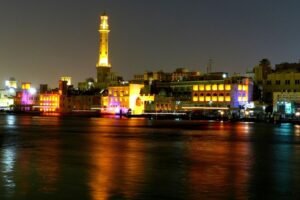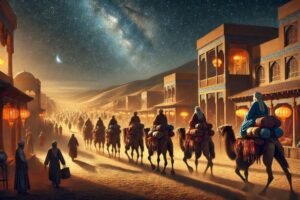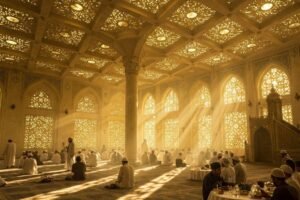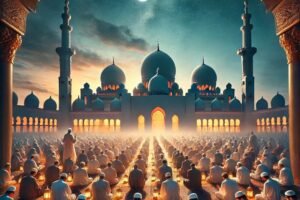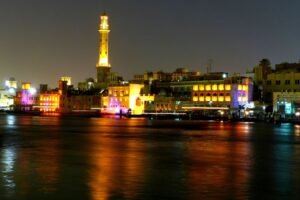Scandinavian folklore is a rich and diverse collection of myths, legends, and stories that have been passed down through generations, deeply rooted in the culture and history of the Nordic countries—Denmark, Norway, Sweden, Finland, and Iceland. These ancient tales, often involving gods, mythical creatures, and spirits, offer a glimpse into the beliefs, fears, and hopes of the people of the North. Many of these stories are still widely known and celebrated today, influencing modern literature, art, and pop culture.
From the majestic Norse gods to terrifying trolls and mysterious spirits of the forest, Scandinavian folklore is full of fascinating and eerie creatures that reflect the harsh landscapes and the spiritual worldview of the people. Let’s dive into some of the most famous myths and legends of the North.
1. The Norse Gods and the Creation Myth

At the heart of Scandinavian folklore lies the mythology of the Norse gods, which has its origins in Norse paganism and the ancient texts known as the Poetic Edda and the Prose Edda. These texts, written in Old Norse, contain the stories of the gods, heroes, and the creation of the world. The Norse gods lived in Asgard, a celestial realm connected to the world of humans, Midgard, by the great Bifrost bridge.
Key Norse Gods:
- Odin: The Allfather, god of wisdom, war, and death. Odin sacrificed an eye for knowledge and was said to roam the earth in disguise, seeking wisdom.
- Thor: The god of thunder, known for his hammer, Mjölnir, and his constant battle against the giants. Thor is a symbol of strength and protection.
- Freya: The goddess of love, beauty, and fertility. Freya is also associated with war and death, as she collects half of the slain warriors in the afterlife.
- Loki: The trickster god, Loki is both a helper and an antagonist to the other gods. His mischief often causes trouble but also leads to great feats of heroism.
The Creation Myth:
According to Norse mythology, the world began in the void of Ginnungagap, where the ice of Niflheim met the fire of Muspelheim. From this clash, the first being, Ymir, was born. The gods Odin, Vili, and Vé killed Ymir, and from his body, they created the world: his flesh became the land, his blood the seas, his bones the mountains, and his skull the sky. The creation myth is a reflection of the harsh and wild forces of nature that shaped the Nordic landscape.
2. The Valkyries: Maidens of Battle

The Valkyries are fierce, warrior maidens who serve Odin, riding winged horses across the battlefields of the world. Their role is to choose which warriors will die and bring them to Valhalla, the great hall of the slain, where they will prepare for the final battle of Ragnarok (the end of the world).
The Valkyries are both revered and feared in Scandinavian folklore, representing death, fate, and honor. They are often depicted as strong, beautiful women who can appear in battle or in dreams, offering their protection to the worthy.
Famous Valkyries:
- Brynhildr: One of the most famous Valkyries, known from the Völsunga saga. She is a tragic figure who, after defying Odin, is punished by being placed in an enchanted sleep, surrounded by fire.
- Sigrun: A Valkyrie who defies Odin’s will to save her lover, the warrior Helgi, showcasing the Valkyries’ human emotions and connections.
3. Trolls: The Giants of the Forest

Trolls are one of the most well-known mythical creatures in Scandinavian folklore. They are typically depicted as large, ugly, and dangerous beings that live in the forests, mountains, and caves of Norway, Sweden, and Denmark. Trolls are often associated with nature spirits and are thought to be ancient beings who predate human civilization.
Troll Characteristics:
- Transformation: Trolls can take many forms, from hideous giants to smaller, more mischievous beings. In many stories, they can turn to stone when exposed to sunlight.
- Cunning and Trickery: Trolls are known for their cunning and tricks, often deceiving humans or causing harm to them. They are, however, not all evil; some tales depict trolls as simply misunderstood or forced to live in isolation.
Notable Troll Legends:
- The Three Billy Goats Gruff: A classic Norwegian folk tale in which three goats outwit a troll who lives under a bridge. The story symbolizes the victory of cleverness over brute strength.
- The Troll Woman and the Mountain: A Swedish legend tells of a beautiful troll woman who, when she falls in love with a human, is cursed to become a mountain, embodying the power and danger of trolls in nature.
4. The Nisse: The Christmas Spirit

In Scandinavian folklore, the Nisse (or Tomte in Sweden) is a mischievous but generally good-natured spirit that is believed to live in the homes and barns of rural families. The Nisse is closely tied to Christmas traditions, and in modern times, it’s become the Scandinavian version of Santa Claus, though the original Nisse is much smaller and more elusive.
Nisse Characteristics:
- Appearance: Nisse are usually described as small, elderly men with long beards, often wearing red hats. They are said to be no taller than a child and have a mischievous gleam in their eyes.
- Protectors of the Home: Nisse are believed to protect the farm and family, particularly livestock, in exchange for food or milk. In return for their protection, they demand respect and occasionally a small offering, such as porridge with butter.
- Mischief: If the Nisse is not properly respected or if it is angered (often by neglecting to leave offerings), it can cause mischief—such as hiding tools, scaring the livestock, or playing pranks on the household.
5. The Huldra: The Enchanting Forest Spirit

The Huldra is a beautiful forest creature, often described as a woman with long, flowing hair and a captivating smile. She is said to live deep in the woods and is known to lure men into her embrace with her charm and beauty. However, the Huldra’s true nature is much darker: she is often depicted with a cow’s tail (which she hides under her skirt) and is said to be a spirit of the forest or a fallen fairy.
The Legend:
According to legend, if a man falls in love with a Huldra, he is either blessed with great fortune or cursed. If he tries to marry her, the Huldra may reveal her true form and drag him into the forest, never to be seen again. In some stories, she may be kind and helpful to those who treat her well, while in others, she is vengeful and dangerous.
Conclusion: Scandinavian Folklore Today
Scandinavian folklore is more than just old stories—it’s a living part of the culture. Many of these myths and legends continue to influence contemporary art, literature, and pop culture, from J.R.R. Tolkien’s Middle-Earth to Marvel’s Thor. They connect modern-day Scandinavians with their ancient roots, offering a glimpse into a time when nature, gods, and spirits were intimately linked with everyday life. Whether you’re exploring the frozen landscapes of Norway or the fjords of Iceland, the echoes of these myths continue to shape the identity and imagination of the North.






